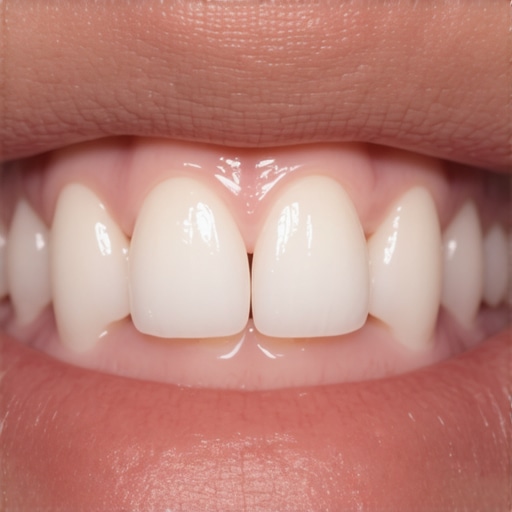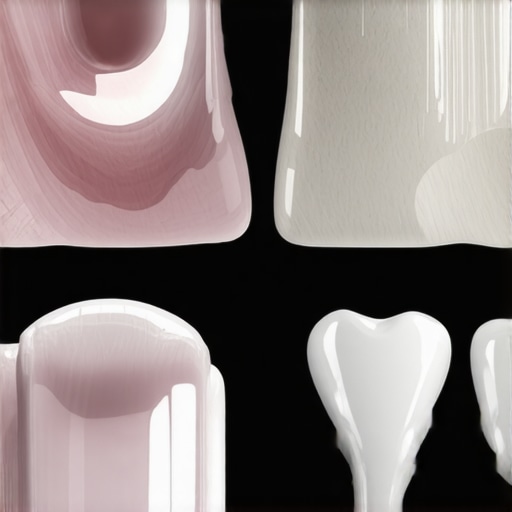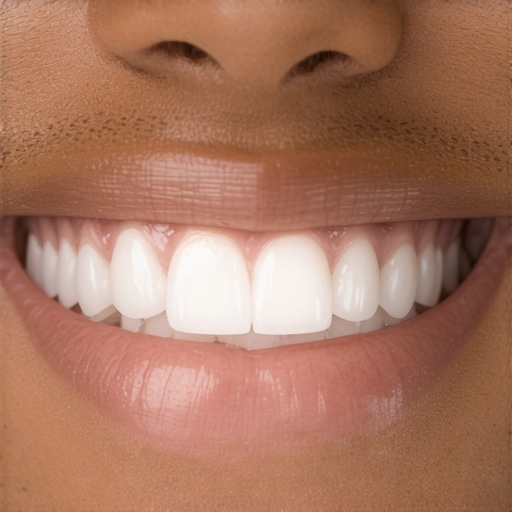Unlocking the Future of Smile Makeovers: The Role of Invisalign and Veneers in 2024
In the realm of cosmetic dentistry, the confluence of innovative orthodontic solutions and aesthetic enhancements has revolutionized patient outcomes. As we approach 2024, understanding how Invisalign and veneers synergize to produce transformative smiles is essential for practitioners aiming to deliver top-tier results. This article delves into the nuanced applications, emerging trends, and scientific underpinnings that define advanced smile transformation strategies.
Synergistic Orthodontic and Aesthetic Protocols: A Paradigm Shift
Contemporary smile design integrates invisible orthodontics with porcelain veneers to address complex malocclusions and aesthetic concerns simultaneously. Invisalign’s precision-guided aligners facilitate controlled tooth movement, creating optimal positioning for veneer placement. This coordination ensures structural integrity and longevity of the aesthetic outcome, aligning with evidence from recent clinical studies on orthodontic-veneering synergy (Journal of Esthetic and Restorative Dentistry).
Technological Innovations Enhancing Smile Design in 2024
How do digital workflows improve the predictability of combined Invisalign and veneer treatments?
Digital smile design platforms enable clinicians to simulate and visualize the final aesthetic, integrating 3D imaging and CAD/CAM technology. This allows for precise planning, minimizing errors, and enhancing patient communication. The integration of virtual treatment planning with Invisalign innovations ensures a seamless transition from orthodontic alignment to veneer fabrication, embodying a comprehensive approach to smile makeovers.
Challenges and Considerations in Hybrid Cosmetic Dentistry
Despite technological advances, practitioners face challenges such as managing tooth structure preservation and ensuring biomechanical stability. The risk of veneer debonding or misalignment post-treatment requires meticulous case selection and interdisciplinary collaboration. Moreover, grey areas such as the optimal timing between orthodontic movement and veneer placement remain topics of ongoing research and debate within the field.
Why are patient-specific factors critical for successful smile transformation?
Factors such as gum health, enamel quality, and facial proportions influence treatment planning. Advanced diagnostics, including CBCT imaging, enable personalized approaches that respect individual anatomical variations. This precision aligns with the goal of achieving natural-looking results that harmonize with the patient’s facial aesthetics.
What are the ethical considerations in promoting combined Invisalign and veneer treatments?
Practitioners must ensure transparency regarding treatment limitations, costs, and maintenance requirements. Ethical practice also involves educating patients about the permanency of veneers and the importance of routine dental care to sustain results. Maintaining trust through evidence-based protocols and clear communication fosters long-term patient satisfaction and professional credibility.
For those seeking to elevate their clinical expertise, exploring comprehensive family and cosmetic dentistry resources offers valuable insights. Engaging with peer-reviewed literature and attending specialized workshops ensures practitioners stay at the forefront of innovative smile solutions.
Interested in expert-level consultations? Contact us today to discuss personalized treatment planning or to contribute your insights to the evolving landscape of smile aesthetics.
Breaking Down the Nuances of Combined Smile Makeovers in 2024
While Invisalign and veneers are well-established individually, their combined application demands a nuanced understanding that only seasoned practitioners can master. This synergy not only enhances smile aesthetics but also optimizes functional outcomes, especially for complex cases involving malocclusion or significant discoloration. Recent advancements underscore the importance of integrating digital planning tools with clinical expertise, ensuring that each component complements the other seamlessly. For instance, digital smile design platforms facilitate meticulous planning, allowing clinicians to visualize the final outcome before any procedure begins, thus reducing uncertainties and improving patient satisfaction (Explore more about smile makeover tips here).”},
Leveraging Biomechanical Principles for Optimal Smile Aesthetics in Hybrid Treatments
Innovative smile design in 2024 necessitates a profound understanding of biomechanical principles to ensure the stability and longevity of combined Invisalign and veneer therapies. Practitioners must consider factors such as force vectors during orthodontic movement and pressure distribution across enamel surfaces to prevent adverse effects like root resorption or veneer debonding. Recent biomechanical modeling studies, such as those published in the Journal of Biomechanics, emphasize the importance of individualized force application tailored to each patient’s unique dental architecture (Journal of Biomechanics, 2023).
Nuanced Role of Enamel Preservation in Complex Smile Rehabilitations
As clinicians push the boundaries of aesthetic enhancement, the preservation of enamel integrity becomes paramount, especially when planning extensive veneer restorations following orthodontic alignment. Utilizing micro-etching and adhesion protocols based on latest research ensures minimal invasiveness while maximizing bond strength. Moreover, understanding enamel fatigue and its implications for long-term success guides practitioners in selecting appropriate preparation techniques and adhesive systems, as detailed in the comprehensive review by the American Academy of Cosmetic Dentistry (AACD, 2024).

Images illustrating enamel preservation techniques and biomechanical force analysis in smile makeovers.
Addressing the Nuances of Digital Smile Simulation for Multidimensional Outcomes
Digital smile simulation has evolved from static visualizations to dynamic, multidimensional modeling that incorporates soft tissue behavior, facial aesthetics, and functional parameters. Advanced software platforms now enable clinicians to simulate muscle dynamics and lip movements to predict how smile alterations will harmonize in real-world expressions. This holistic approach facilitates more accurate treatment planning, reducing the risk of postoperative dissatisfaction. As highlighted in recent publications in the International Journal of Computerized Dentistry, integrating artificial intelligence algorithms enhances predictive accuracy, especially in complex cases involving significant malocclusion or asymmetry (IJCD, 2024).
What innovative methods are emerging for personalized 3D treatment simulations?
Emerging techniques include machine learning-based predictive modeling and biofeedback-driven adjustments during treatment simulation. These methods allow for iterative refinements based on patient-specific data, such as muscle activity patterns and tissue elasticity. Such innovations promise to elevate the precision of combined orthodontic and restorative procedures, ultimately leading to more predictable and satisfying aesthetic outcomes.
To deepen your expertise, exploring the latest peer-reviewed research and participating in specialized workshops can significantly enhance your mastery of these advanced techniques. For a tailored consultation or to share your insights, reach out to our expert team today.
Harnessing Biomechanical Innovations for Enhanced Smile Aesthetics in Hybrid Treatments
Recent advances in biomechanical modeling have opened new avenues for clinicians aiming to optimize the stability and durability of combined Invisalign and veneer procedures. Precise force vector management during orthodontic movement, coupled with strategic pressure distribution across enamel surfaces, minimizes risks such as root resorption and veneer debonding. Cutting-edge studies published in the Journal of Biomechanics underscore the importance of individualized force application tailored to each patient’s unique dental architecture (Journal of Biomechanics, 2023).
Innovative Enamel Preservation Techniques for Complex Rehabilitations
As aesthetic demands escalate, preserving enamel integrity becomes paramount—especially when planning extensive veneer restorations post-orthodontics. Techniques such as micro-etching combined with advanced adhesion protocols, informed by the latest research, enable minimally invasive procedures that maximize bond strength. Understanding enamel fatigue, its implications for long-term success, and selecting appropriate preparation and adhesive systems are crucial, as detailed in the 2024 review by the American Academy of Cosmetic Dentistry (AACD, 2024).

Illustrative images demonstrating enamel preservation and biomechanical force analysis in smile makeovers.
Digital Smile Simulation: The Next Frontier in Multidimensional Predictive Modeling
Transforming from static visualizations, digital smile simulations now incorporate soft tissue behavior, facial aesthetics, and functional parameters through advanced software platforms. These tools enable clinicians to simulate muscle dynamics and lip movements, providing a holistic view of how aesthetic modifications will manifest in real expressions. Incorporating artificial intelligence enhances predictive accuracy, especially in cases involving significant malocclusion or asymmetry, as discussed in the International Journal of Computerized Dentistry (IJCD, 2024).
What emerging methods are transforming personalized 3D treatment simulations?
Innovations such as machine learning-based predictive modeling and biofeedback-driven adjustments are at the forefront, allowing iterative refinements based on patient-specific data like muscle activity and tissue elasticity. These advancements promise to elevate the precision of combined orthodontic and restorative procedures, leading to more predictable, satisfying aesthetic outcomes. To deepen your expertise, explore the latest research and participate in specialized workshops. Contact our expert team today for personalized guidance.
Expert Insights & Advanced Considerations
1. Emphasizing the Integration of Digital and Biomechanical Techniques
Leading practitioners recognize that combining digital smile design with biomechanical modeling enhances treatment precision, reducing risks such as root resorption or veneer debonding. Staying current with the latest research ensures that orthodontic forces and restorative pressures are optimized for durability and aesthetic excellence.
2. Prioritizing Enamel Preservation in Complex Cases
Enamel integrity remains a cornerstone of successful smile rehabilitation. Minimal invasive approaches like micro-etching and advanced adhesion protocols are becoming standard, allowing for maximum bond strength while safeguarding tooth structure, especially in extensive veneer applications.
3. Leveraging AI and Machine Learning for Personalized Treatment
Emerging technologies in AI-driven predictive modeling and biofeedback are revolutionizing digital simulations. These innovations enable clinicians to tailor treatments meticulously, ensuring outcomes harmonize with facial dynamics and functional parameters, thereby elevating patient satisfaction.
4. Embracing Interdisciplinary Collaboration
Optimal results in hybrid smile makeovers depend on seamless collaboration among orthodontists, restorative dentists, and lab technicians. Continuous education and shared digital platforms facilitate interdisciplinary planning, ensuring cohesive treatment pathways for complex cases.
5. Focusing on Patient-Centric Communication and Ethical Practice
Transparency about treatment limitations, costs, and maintenance is essential. Educating patients on the permanency of veneers and the importance of routine care builds trust, fostering long-term satisfaction and professional credibility in advanced smile aesthetics.
Curated Expert Resources
- Journal of Esthetic and Restorative Dentistry: Offers cutting-edge clinical studies on orthodontic-veneer synergy and innovative restorative techniques.
- American Academy of Cosmetic Dentistry (AACD): Provides comprehensive guidelines on enamel preservation, adhesion protocols, and minimally invasive procedures.
- International Journal of Computerized Dentistry: Features advances in AI, virtual treatment planning, and multidimensional digital smile simulations.
- Journal of Biomechanics: Publishes research on biomechanical modeling and force application tailored to personalized dental treatments.
- Smilegum Care Resources: An authoritative platform with practical insights, case studies, and expert consultations for complex smile makeovers.
Final Expert Perspective
In the evolving landscape of smile aesthetics, mastery of Invisalign and veneers in 2024 hinges on integrating digital innovation with biomechanical precision and enamel preservation. The most successful practitioners will be those who embrace interdisciplinary collaboration, leverage AI-driven insights, and uphold the highest standards of ethical patient communication. To deepen your expertise and share insights with peers, consider engaging with our comprehensive resources or reaching out through our contact page. Staying at the forefront of these advancements ensures you deliver not only beautiful smiles but also the enduring trust of your patients.

